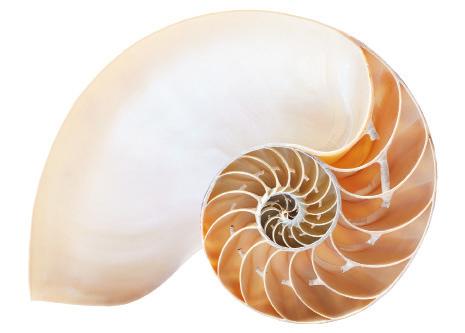
1 minute read
MATHS WORKSHOP
Read And Learn
Golden rectangles
A rectangle is called a golden rectangle when the ratio between its sides coincides with the golden number. In other words, if we take the shorter side as one unit, the longer side will measure the golden number, F = 2 1 5+ = 1.618…
These rectangles have a curious property: if you put a square on the long side, you get another golden rectangle. Try it:
• If you keep adding ever-bigger squares, you will get a series of golden rectangles that you can use to construct a pretty spiral made up of arcs.
This spiral is very well known and widely studied in mathematics (the equiangular or logarithmic spiral). But the most surprising thing about it is that it appears naturally in many species of plants and animals (flowers, fruit, mollusc shells, etc.).
• Now construct the series of successive radii of the spiral, which are the same length as the sides of the squares that fit together to make it:
R1 = F
R2 = F + 1
R3 = 2F + 1
R4 = 3F + 2
R5 = 5F + 3
…
Can you find a relationship between this and the Fibonacci sequence?
Leonardo of Pisa (1170-1250)
Also called Fibonacci (which means ‘son of a good man’). His father was a merchant and consul of Pisa in the city of Béjaïa, in present-day Algeria.
This allowed him to learn Arabic mathematics, especially the decimal numeral system, which he helped to introduce to Europe.
He was the first to describe the famous sequence: 1, 1, 2, 3, 5, 8, 13, 21, 34, 55, … in which each term is obtained by adding the previous two. This Fibonacci sequence is closely tied to the golden number, F.




